While out in the garden snapping photos last week, our farm photographer, Karina, was startled by a bee.
But not just any bee …
Not the industrious honeybee, who’s busy gathering pollen for the long winter ahead …
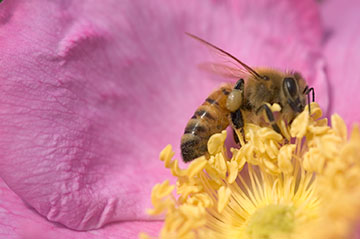
Not the giant, fuzzy bumblebee who buzzed past her ear, sounding very much like a very large, very close remote-control helicopter …
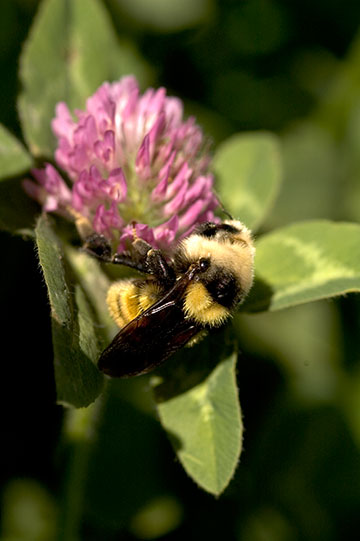
Yes, this bee had the signature yellow-and-black stripes …
but his upper body was bright, shiny GREEN!
What the heck? Were her eyes playing tricks on her? Was Karina’s camera lens hooked up remotely to Photoshop? She quickly snapped a couple of photos, then buzzed on over to her computer to find out more about this shiny, green bee.
Turns out, our visitor was something called a Metallic Green Bee (Agapostemon). They’re commonly called “sweat bees” because they resemble (and are kin to) other species of bees that are attracted to human sweat. But don’t worry, these little beauties are too refined to like your stinky sweat. There are about 40 species of Metallic Green Bees in both North and South America. And our guy was a guy—the females are usually metallic green all over, while the males have a yellow-and-black striped abdomen, like our guy did. There are two generations of Metallic Green Bees a year: one in the summer, which is almost all females, and one in the fall, which includes both females and males.
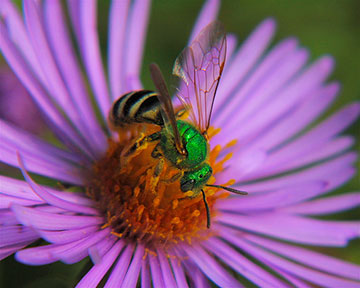
Photo by Dan Mullen via Flickr
These bees are ground-nesting, living alone instead of in a hive, although many can live in close proximity. Sometimes, a couple of dozen females share one entrance, but each one then builds its own little nest off the main corridor—a kind of Miss Lavinia’s Lodgings for Ladies, if you will. In this case, one of the ladies (Miss Lavinia?) guards the entrance and you can see her little green head sticking up slightly above the hole. Don’t mess with Miss Lavinia’s girls!
Keep an eye out for these gorgeous green buzzers … and their bright-blue cousins, Augochloropsis sumptuosa … simply sumptuous!
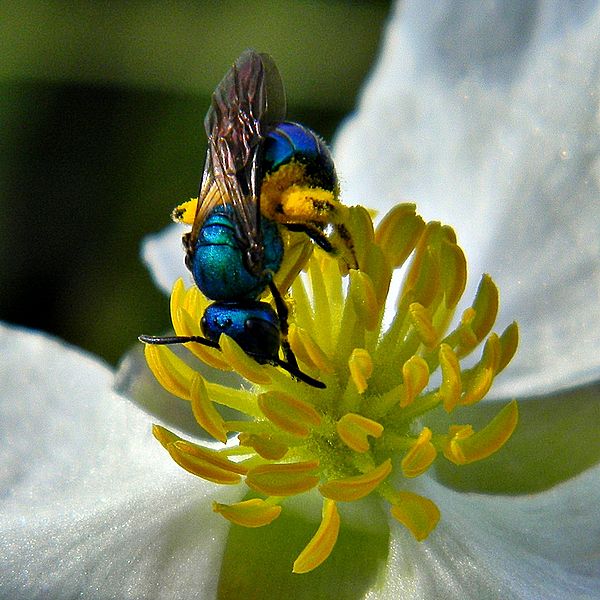
Photo by Bob Peterson via Wikimedia Commons














































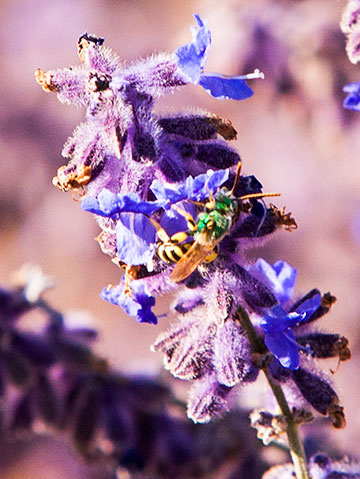









Wow, this is incredible. I have never heard of such a thing. The metallic green with the yellow and black is stunning against the purple flowers. I must say, however, that their size makes me think bad bee sting for some reason. We have some black and yellow large bee/hornets with a similar body configuration down here that pack a whallop of a sting. Thanks for sharing these photos and information today. I love a little science class first thing in the morning!!
Wow!
Oh good ,then iIwasn’t hallucinating after all when I saw a metallic bee about a month ago. I just thought I had somehow confused a bee and a bright blue dragonfly- now I know, as Paul Harvey always said : ” …the rest of the story ..”
THAT is amazing!!! Oh I must go out and find some to photograph myself ~ yes, to show off my new found knowledge to all of my friends! They will be way more impressed with this than they were when I told them about the giant Palouse earthworm I found in the yard (lots of “ewwwww – that’s creepy” comments for that one 🙂 made me proud). Nature continually astounds me! What a wonderful gift she gives us.
Very interesting! I find bees to be most fascinating! Loved the book required for the “bee” Merit badges, “Bees, Nature’s Little Wonders”. One of my favorites!
Thanks!
CJ